I am shocked at the degree to which I’m enjoying Silksong. Hollow Knight slid over me, so I wasn’t anticipating a game that fulfills my pervert need for intense, unforgiving, white knuckle difficulty. There is so much I love in this complex, post-lapsarian bug mound. It is undoubtedly a labor of love, one full of strong, opinionated choices and intentional friction. Unfortunately, some of those choices are ambiently annoying to me personally, tiny little irritants in an otherwise unspeakably beautiful and once–in-a-generation platformer.
On the nature of perversion
Lest this devolve into an annoying Cuphead/Souls fight about difficulty, I would like to state that I am, in the gaming sense, a pervert. I say this not for approval or as a signifier to an in-group, but for context: My favorite experiences are often the gaming equivalent of getting your hand repeatedly slammed in a car door. I love grotesque indies that kill you instantly and unfairly, and retro shooters that border on pornography. In the case of Silksong, I love when a game hits me on the head with a big cartoon mallet until I memorize its inscrutable little patterns. There is a bliss when ego dies that can only be found in the solace of the pain cave.
But being a game pervert is not a uniform experience; there is no big dial labeled “freaky” that goes from 1-10. Every game pervert has different preferences, often shaped by some unplayable dreck that duckling imprinted when they were trapped with it at an impressionable age. A pervert can explain away certain unforgivable choices as “actually genius" or non-offensive in a way that does not personally bother them, while finding something benign to be grounds for war crime tribunals. Perversion is best when it marries the cold, detached ego of a great critic and with the depraved id of someone who learned Japanese by playing every game in an intellectually interesting 7.5/10 series that goes back to the PC Engine CD.
Silksong is undoubtedly for perverts–it is a game of strong choices and is mostly “my shit.” There are some choices, like the lack of a healthbar, that I agree with despite other people wanting one enough to mod it into the game. The parts where it is not for me I find tremendously annoying in a way that another pervert would not bat an eye at. This is not a discussion of the many things the game does well, but rather where the game falls apart for me. Perhaps your perversions are similar to my own.
The following post features minor naming and mechanical spoilers for Act 1 and one part of Act 2 of Silksong.
There should just be a homeward bone
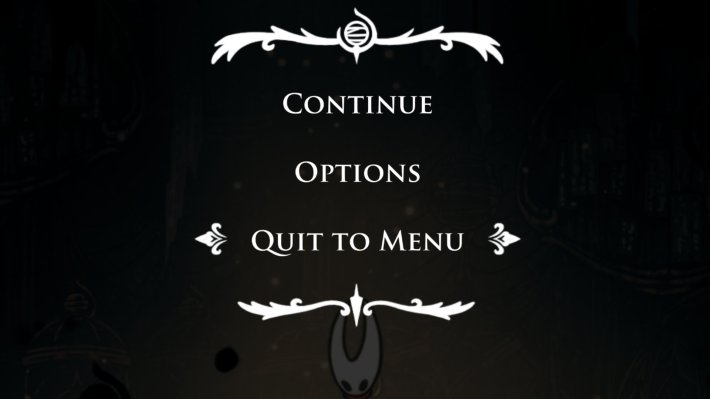
A tiny thing the game doesn’t tell you when you are playing is that you can return to the last bench you rested at instantly with all your stuff intact. This can be done by selecting “quit to menu” and reloading your game. Instead of picking up where you left off, the game places you back at the bench with all your rosaries in hand instead of Hornet having to backflip her bug ass back after an annoying cocoon run.
This would be a fantastic feature if it were telegraphed, as it is clutch if you’re trying to retrieve your cocoon after a death or engage in certain farming routes early on for rosaries. The problem is that while this has to be intentionally in the game mechanically, it presents as an unofficial workaround rather than something the player is meant to use.
I find its presence as a weird hack to be incoherent. If the player is allowed to warp back to the last saved bench, there should just be an item in the menu that does that – like the homeward bone in Dark Souls or the homeward idol in Sekiro. I understand why Team Cherry might implement this mechanic in a way that doesn’t call attention to it, but if it’s already in the game it should just be implemented honestly.
The shell shard economy is pointless and tedious
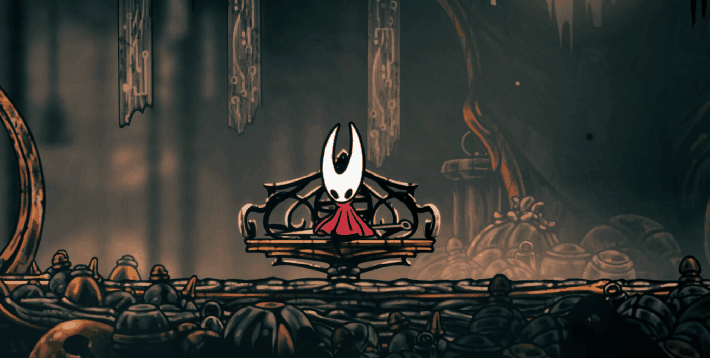
Hornet can equip tools like throwing knives, boomerangs and spike mines to dispatch enemies as an alternative to melee combat. In order to refill many of those tools, the player must use shell shards picked up from killing small enemies, or purchase shard bundles from a vendor. Tools are most useful against annoying medium-sized enemies and bosses. Often, it makes the most sense to save your shards for a particularly brutal fight. In one way, the shard economy functions not unlike blood vials in Bloodborne or Spirit Emblems in Sekiro – a resource that is helpful but must be collected.
Here’s the thing: though mechanically I like blood vials, they are ultimately one of the worst design decisions in Bloodborne. And while you may need to farm vials and emblems, neither are nearly as punishing from an exchange rate as Silksong’s shell shards. Silksong’s shards take one of the worst parts of a great game and lean into it.
If you’re naturally good at Silksong, you might not rely on tools as much as a player who is still attempting to learn the encounter. If you could reload your tools by picking up shards in the field, the mechanic would make sense. But because tools are refilled at benches, forcing an economy around them only serves to add busywork to a frustrated player banging their head against the boss fight.
The player can skew the shard economy by farming rosaries to purchase bundles of shards from the Forge Daughter, Mottled Skarr, or the vendor in Bellhart, but this feels like an elaborate band-aid to a mechanic that feels clunky, and optimizing rosary farming for shards feels like homework. Improving the exchange rate for refilling tools or removing the shard economy outright and having tool refills be free at benches would not harm the game a single bit (you would have to tweak how one crest works.) What’s more, you can still have resource scarcity with rosaries, which is a place in the game where scarcity often feels good and forces the player to make interesting purchasing decisions.
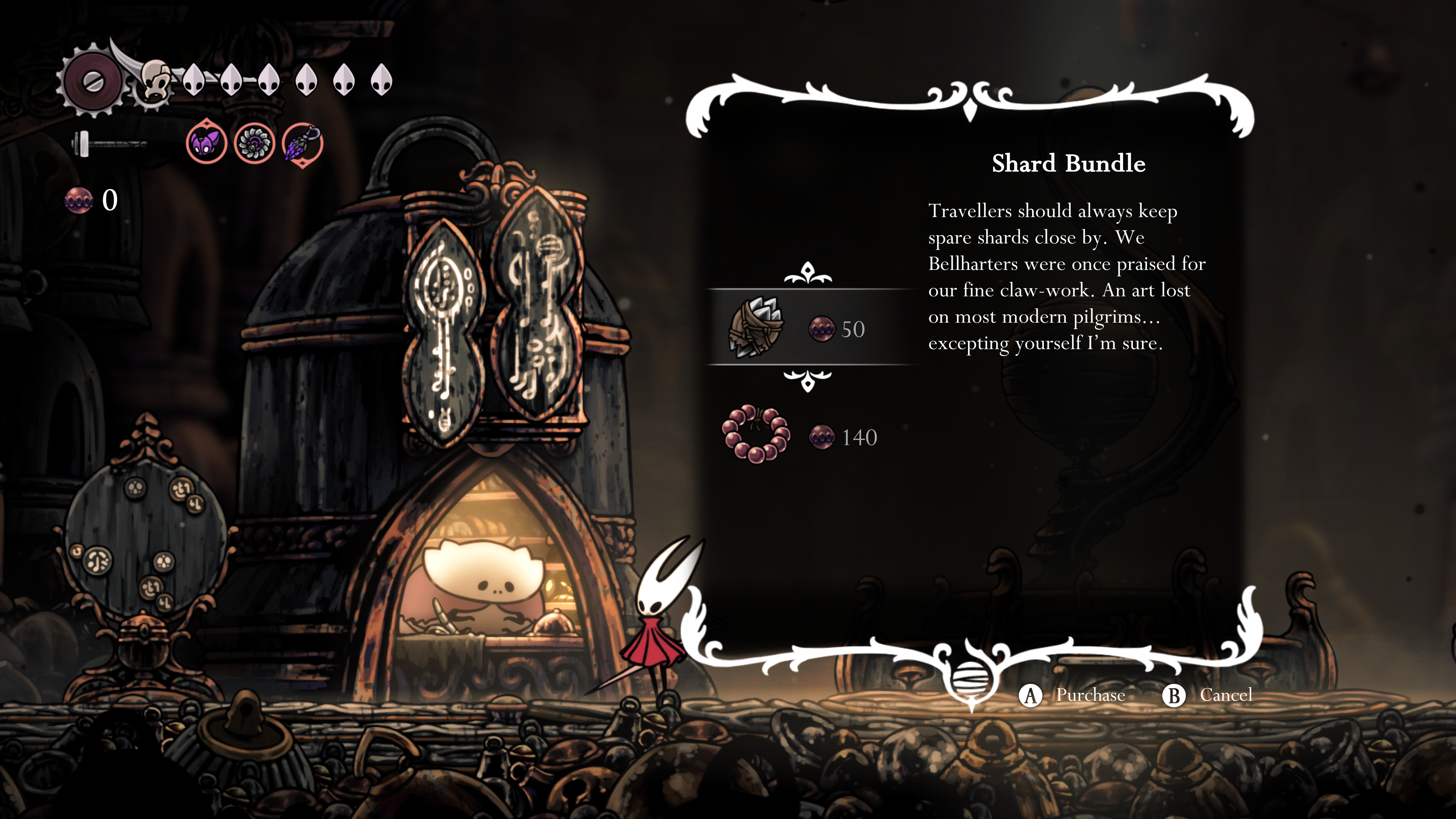
I will concede that shards serve exactly one purpose, and that’s narrative. The distinction between which bugs drop shards and which drop rosaries distinguishes which bugs have or once had fear of a divine presence and thus cognition. But it does so at the cost of a mechanic that should have been reworked in playtesting.
Even if I was to be charitable and say that the mechanic was attempting to encourage the player to explore other areas instead of having them repeatedly attempt a boss fight unsuccessfully, I don’t believe it succeeds on those terms. It is a mechanic that exclusively punishes novice players who are attempting to learn an encounter, and while the rejoinder of “don’t rely on tools” is indeed a fair argument, the mechanic itself discourages the process by which a bad player becomes good by disrupting the flow of repeated attempts. After all, why go into a boss fight unprepared? And even if it was working as well as the economy in either Sekiro or Bloodborne, it’s totally lopsided economically. That said, I will concede that there’s probably a sick freak out there who gets off on farming shards.
The runback haters are more correct than not
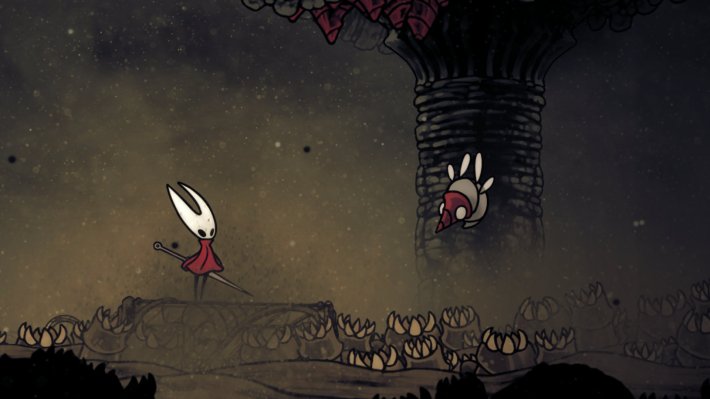
Lord knows I’ve played a lot of Souls games, and a lot of them have had some nasty boss runbacks, or areas of traversal between the save point and the boss. But I will give FromSoftware credit in one area: they got slightly more merciful when it comes to putting a freaky gauntlet of enemies before a particularly challenging boss. While I don’t think Silksong has this problem uniformly, it happens intermittently enough to make me go “c’mon man.”
I should stress that a good runback serves a distinct purpose: It gives the player time and space to consider what they did right and wrong, to strategize, and to breathe. A good runback is a meditative exercise unto itself. A bad runback is either an abrasive gauntlet that distracts from the flow state of repeated boss attempts or a weird pebble in your shoe. And while I understand the utility in making the runback scene-setting to the encounter, it is often counterproductive from a gameplay perspective. One of the most popular Silksong mods takes inspiration from the Stakes of Marika in Elden Ring, creating soft respawn points outside of boss encounters.
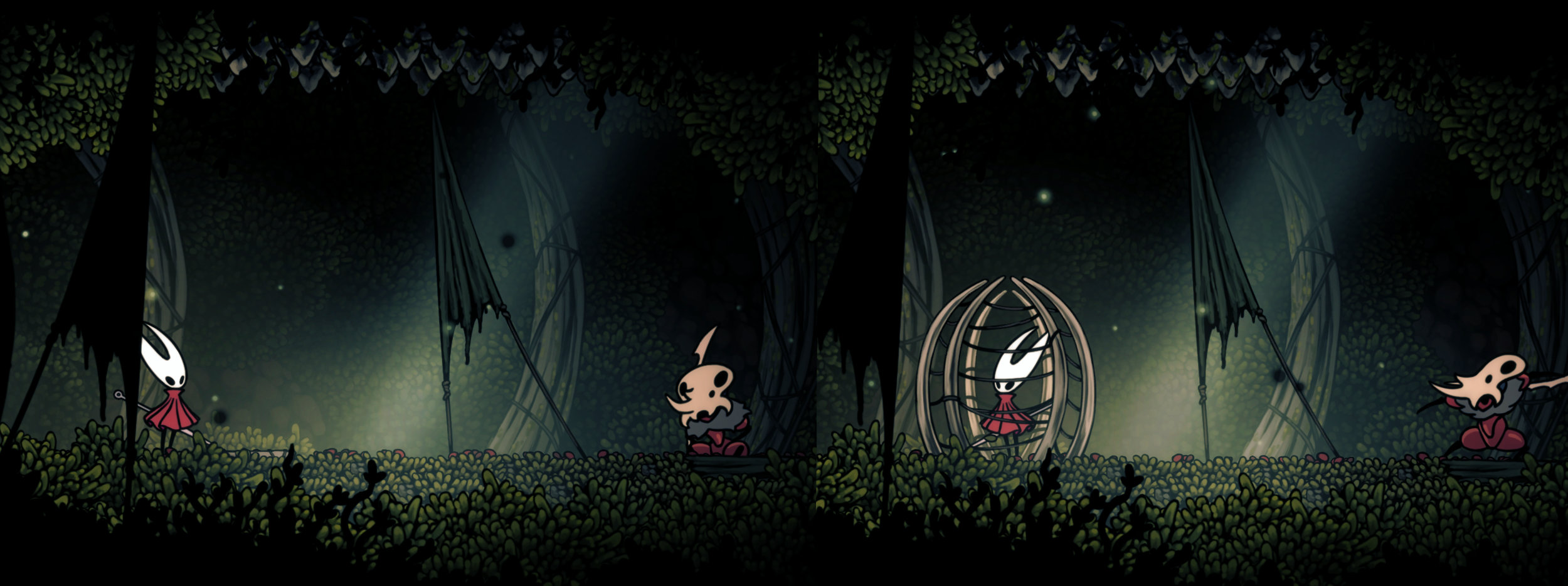
I am of two minds with the runbacks in this game, but err on the side of the haters on the grounds that, in practice, Silksong’s runbacks are monotonous. The one right before the Savage Beastfly (itself a boring-ass boss that does not deserve its own subreddit and drops a crest I dislike) is not challenging enough to be interesting, but it adds enough friction between attempts to be occasionally distracting (although if you manage to do this when Shakra is there, the path is clear).
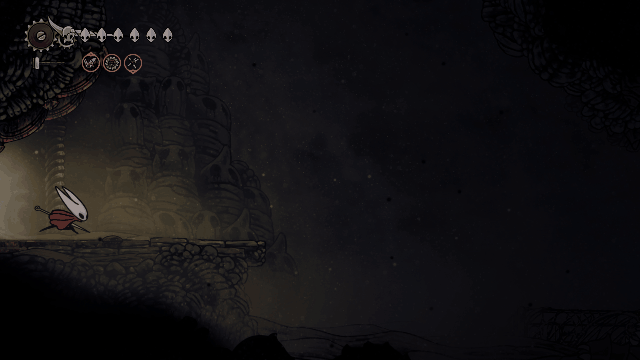
The runback that has gotten the most amount of hate is the one before The Last Judge. While I think it does a fantastic job in setting the tone, and that it’s mostly fine if you sprint past the first drillfly and take the little chimney path, doing it repeatedly can become tiresome given how many hits that boss takes. Getting good at the runback can occasionally feel cool, and The Last Judge is supposed to be Silksong’s Alma: an unforgiving end of Act 1 skill check, and the culmination of a huge part of the narrative (provided you take the logical route there). But something is clearly not working for a lot of people despite how beautiful both the setting and the design of the Judge are. The question is: Is the issue the runback, the design of the encounter itself, or the way that both of those things work in concert? If a runback is understood as part of the boss battle itself, does it subtract from the encounter?
The most depraved runback is in Bilewater, which I will concede is specifically designed to be torturous, and thus is working as intended. I cannot stress how much people hate this place. But even if you agree with the choice of creating a poison swamp more sadistic than any imagined by Hidetaka Miyazaki, I will counter that (respectfully) whoever designed it is one of gaming’s greatest monsters.
Some flying enemies in this game suck a little bit more than I’d like
This is perhaps the pettiest of all my gripes, but I don’t like how this game handles flying enemies. I think a bird enemy that screws with you mid-jump is a foundational component of any brutal platformer, but many of Silksong’s flying foes tend to hover just out of range and input read instead of homing in predictable patterns. I would not be opposed to this behavior in a vacuum, but the game also loves spawning a bunch of little flying freaks in runbacks and boss encounters, often to their detriment. Eventually you get the clawline and that solves most of the issues with flying enemies, but that happens in the middle of Act 2, and by that time you’ve had to deal with these freaks for a while. Perhaps you like them, but that’s a matter of taste.
Bring back float override input as an option
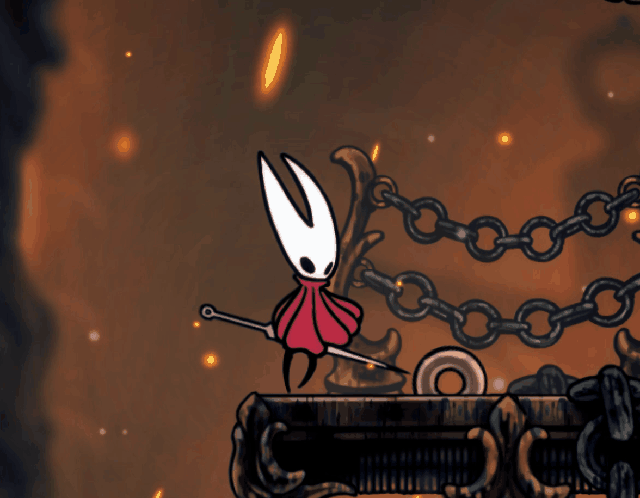
Silksong throws a ton of movement upgrades at you. The Drifter’s Cloak upgrade not only has the funniest animation (Hornet’s cloak becomes a big ass parachute and she kinda dangles like Peach in Mario 2) but it's also clutch in combat. In the middle of Act 2 you get the Faydown Cloak, which allows you to double jump on top of this, but in the process it fucks up how you have been using the float up until this point and forces you double jump before floating even when you don’t need to. Apparently the game had a “float override input” that let you force the float by pressing down when you jump, but this was screwing with too many players and Team Cherry patched this out of the game. It kinda feels like they backed themselves into a corner with this one, but I think the override should be optional at the very least. If the counter-argument is “you should simply relearn the movement,” then the double jump should have been put out earlier instead in the ass end of Act 2.
Also, while I’m on the topic of movement abilities, Hornet’s Swift Step being on RT trigger by default doesn’t work as well as it should unless you have the ability to bind it to a back paddle or switch your trigger to a short throw one. This is mainly a preference, as I feel there’s too much travel time on a trigger for the dash to be deployed rapidly. I have short throws on my ZD-0 Ultimate Legend that turn RT into a clicky button and I can’t imagine going back.
Contact Damage is a land of contrasts
Contact damage has been a part of platformers for eternity, so I cannot help but respect it (even if I believe spiritually that just touching a guy shouldn’t hurt you). Contact damage turns the world into a big minefield, where in a platformer you want the presence of enemies to pose an active risk. I understand its usage in Hollow Knight, Silksong and the majority of old school platformers. Eyepatch Wolf has a pretty good argument for this when comparing Silksong to Shinobi, and how it turns even basic enemies like the ant warrior into an active threat every single time. In the field, Silksong’s contact damage can feel very good and forces the player to actively learn proper spacing, a skill many of us have all forgotten.
But how contact damage is implemented in boss fights can be occasionally irritating. Bosses tend to have weird, unwieldy hitboxes, and downed enemies still give contact damage. This topic led to an exceedingly active conversation within the subreddit that is worth reading if only for the contrast in the responses. I understand why Team Cherry did this: It makes sense that contact damage should be consistent from a design perspective even during a stun, and I understand the pedant’s argument of “well if you get hurt by a downed boss that’s your dumbass fault for not learning spacing.” But my main issue is that boss hitboxes can shift almost arbitrarily on occasion. In the few times it has backfired on a downed boss, it has felt quite bad. If an enemy touching you constitutes an attack, then the boundary of that attack should always be crystal clear.
There’s also been a longer discussion about how Team Cherry has implemented contact damage generally. I do think the balance of contact damage feels weirdly inconsistent, but I will concede that health in games is a somewhat relative and arbitrary value. There’s a much longer and more interesting conversation to have about the psychological perception of damage; why does a certain amount of damage feel less fair? This is also an issue where I expect to see the most post-launch tuning, and thus any detailed writing about it could quickly become irrelevant.
Perverts everywhere
Though many of these choices annoy me, I understand the logic that led to each one of them being made and the type of perverts they were made for. I see, with the cold clarity of a deviant, why none of these little bits would bother an ardent and loyal degenerate, and how someone could react poorly to prodding at those choices: “Why should it bother you if it doesn’t bother me?” or the more frequent “Hollow Knight did that, are you saying Hollow Knight is bad?” I can also see the process by which Team Cherry methodically made something that felt correct for them, an extension of their previous game that’s tuned to their tastes and to those of their audiences.
In the past, challenging games like Silksong have suffered from two problems – a misunderstanding of the conversation between the developers and intended audience on the side of critics, and a frequent dismissal of what little real criticism is left on the grounds that critics are not sufficiently “one of them.” This often plays out in a way that is reactionary and boring, leading to a wall of noise where nobody has a productive conversation about why games make certain choices.
But in my experience, the few people left who are paid to write about these games love punishment more than most people. To be a pervert, both inside and outside of gaming, is not rarified these days. Consensus reality has collapsed and every one of us lives in a cocoon tailored to our own predilections. To the extent that anything is big, Silksong and Elden Ring are the definition of mainstream. There are perverts everywhere for those with eyes to see.
If you understand what these games actually are and contextualize them as such, then the conversation has the opportunity to become more interesting and layered. If a game has a streak of sadism, then a discussion of the potential failing of its mechanics can be rendered as a failure to properly calibrate that sadism. In a world where perversion is the mean, punishing games can be rendered as a polite disagreement between different breeds of masochists over their preferred form of punishment. After all, it is all a matter of taste, isn’t it?


